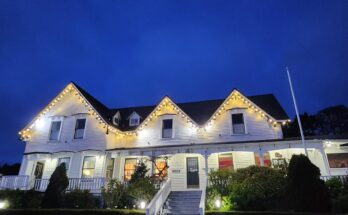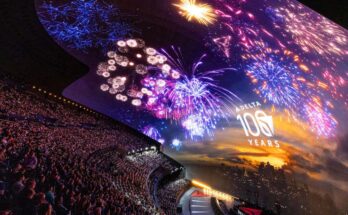Death Valley is the largest national park in the continental United States, and the hottest, driest, and lowest of all the national parks in the U.S. It also happens to be one of the hottest places in the entire world! Despite that, it’s one of my favorite of all the national parks I’ve visited so far.
Where Is Death Valley National Park?
Death Valley National Park is located in southeastern California near the California-Nevada border. Las Vegas is approximately 2 hours to the southeast, and Los Angeles is about 4 hours and 30 minutes to the southwest.
How Do You Get There?
California State Route 190 runs through the heart of the park. If you follow Nevada State Route 160 from Las Vegas, you can easily make a short visit to Red Rock Canyon and stock up on supplies in Pahrump, Nevada.
When Is The Best Time To Visit Death Valley National Park?
Summer is considered the off-season at Death Valley National Park. The extreme heat keeps most visitors away, and some of the hotels, campgrounds, and restaurants shut down. Fall, winter, and spring are the most popular times to visit, and even in December the weather is lovely, with average temperatures of 65 degrees. Temperatures occasionally go below freezing in winter.
That said, there is still intense heat in the early fall and late spring. Because of the extreme weather, the park’s large size, and the possibility of getting lost, it’s important to exercise caution all year round. Traveling with more water and food than you think you’ll need is a good idea.
Can You Visit The Park During The Summer?
On the afternoon of July 10, 1913, a temperature of 134 degrees was recorded at Death Valley National Park. Ever since a 1922 record of 136.4 degrees in Libya was disqualified from the record books, Death Valley has been the record holder for the hottest place on earth.
Explore The Park’s Most Famous Landmarks
Whether you’re in your car, on a bike, or hiking, Death Valley offers countless corners, trails, roads, and natural features to explore. The park rangers can recommend the best places to go for sunrise and sunset as well as the best time of day to visit other park hot spots.
These landmarks should be on every traveler’s must-see list:
1. Badwater Basin
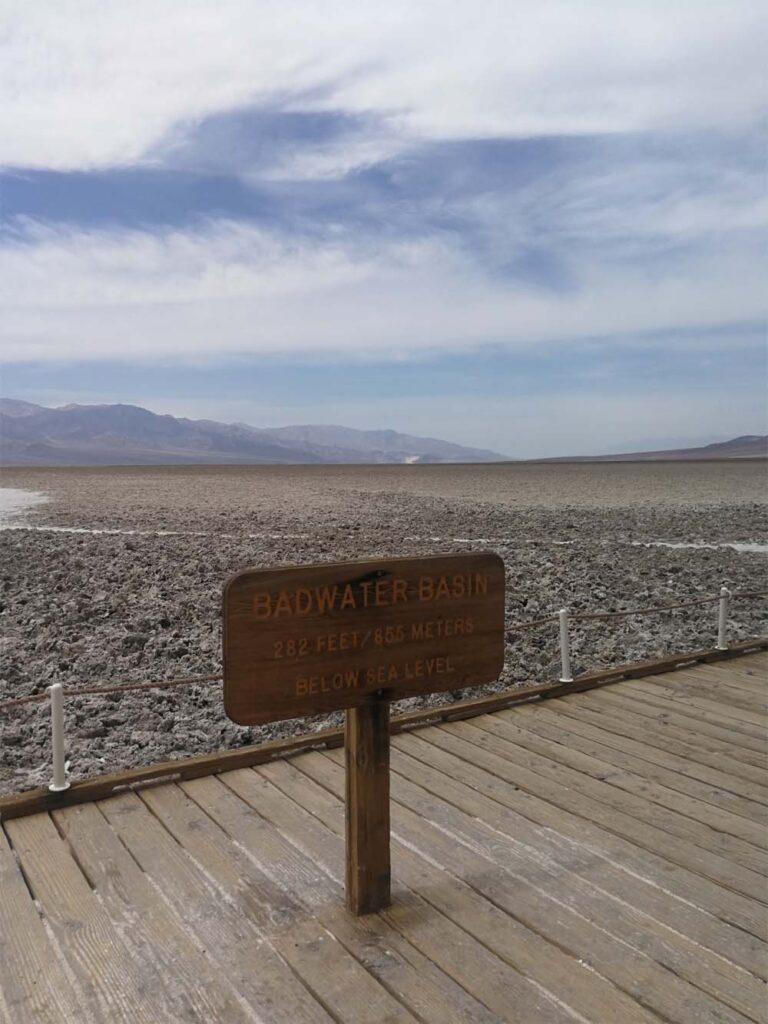
Of all the things to do in Death Valley, this is definitely the main attraction in the park.
Badwater Basin is the lowest point in North America at 282-feet below sea level. There’s a small parking area here, a boardwalk, and a trail to the salt flats. I highly recommend walking the trail into the basin. There, you can see the white hexagon shapes that spread in all directions.
You can also see some outstanding views from here, looking up to the surrounding mountains. Views are best later in the day when the sun is shining on the mountains.
Don’t forget to take your typical tourist photo with the sign! Depending on the crowds, there may be a line of people waiting.
Look closely at the mountain behind the parking lot and you might spot the sign for sea level.
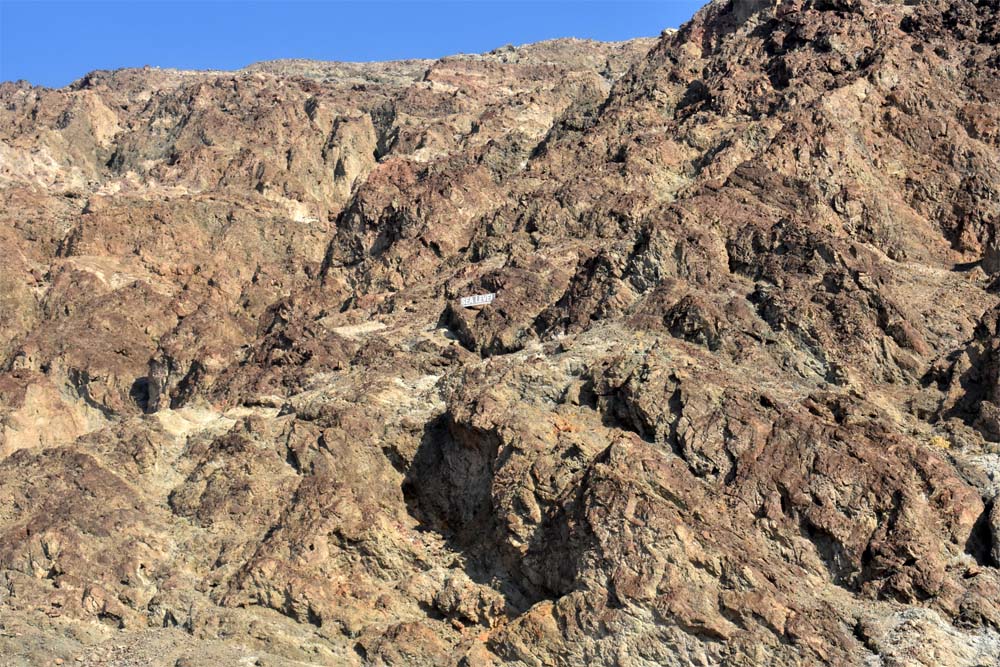
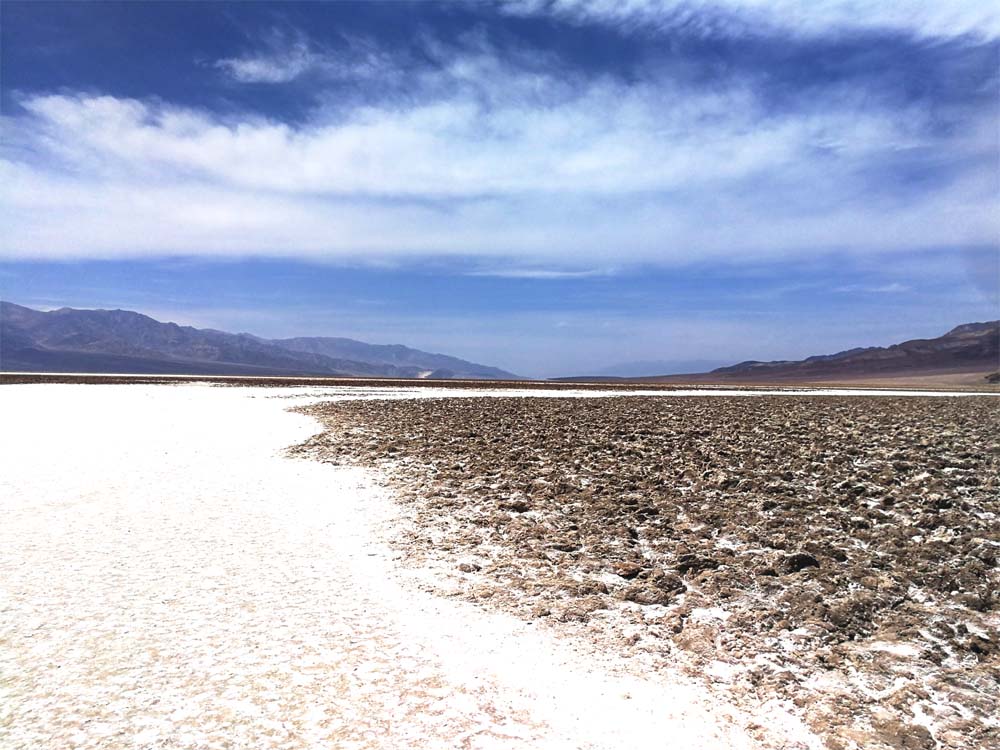
Distance from Furnace Creek: 30 minutes one-way
2. Zabriskie Point
Another one of my favorite things to do in Death Valley, the area around Zabriskie Point is stunning. The main attraction is the rock formation above, exposed by the mountains in the distance. You can also walk a trail below to take it in from a different angle.
Zabriskie Point is probably most famous for its incredible sunrises and sunsets. Photographers will flock here to snap the perfect shot, so arrive early if you’re hoping to do the same.
From the parking area, you’ll walk a short 1/4-mile paved path to the viewpoint. Another one of Death Valley’s main things to see, you’re basically required to stop here at some point during your visit. There are great hiking trails through the badlands as well.
Distance from Furnace Creek: 15 minutes one-way
3. Devils Hole
Did you know that there are special species of Pupfish that only live in one small pool? Here, at a satellite area of Death Valley National Park in Nevada, you’ll find the only home of the Devils Hole pupfish in a pool of water that remains a consistent 93°F.
The Devils Hole pupfish is extremely small and resilient. They are considered critically endangered due to their extremely limited habitat. Attempts have been made to create additional habitats for them, but none have succeeded. In 2013, there were only 35 known to exist. As of 2019, the number has increased to 136.
This is one of the more unique things to do in Death Valley National Park, and one of the least common. This is a great option if you want to avoid crowds. It is a bit farther from the other attractions in the park, so I would save it for when you have extra time.
Distance from Furnace Creek: 37 miles one-way
4. Artist’s Drive And Artists Palette
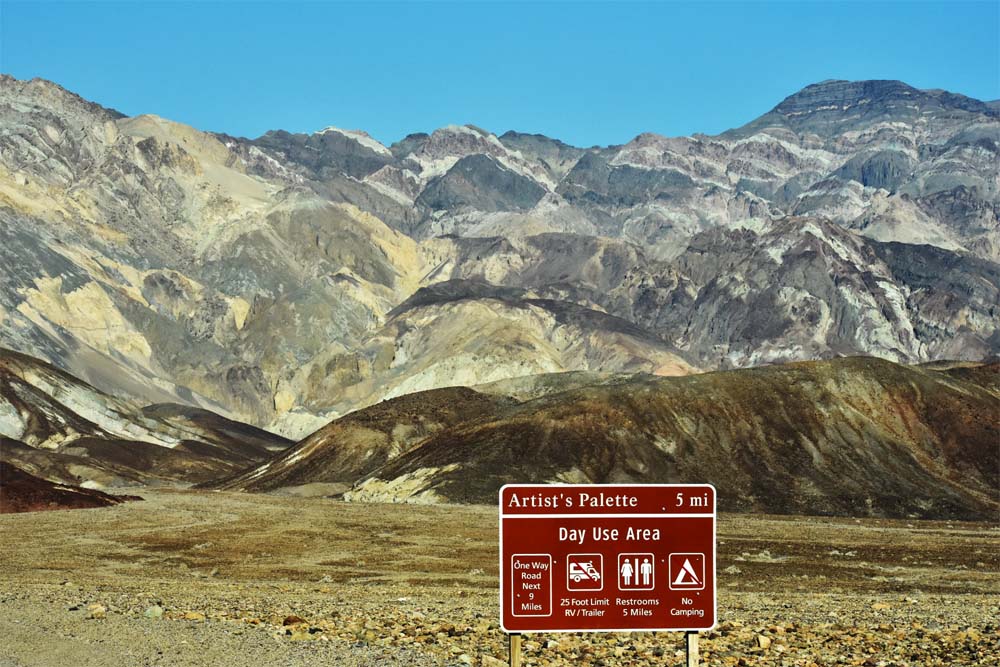
When driving back to Furnace Creek from Badwater Basin, take a detour on the one-way Artists Drive. One of the best things to do in Death Valley, I promise you won’t regret the extra mileage.
On the 9-mile drive, you’ll find your jaw falling open as you marvel at the colorful hills. Stop at Artists Palette along the drive to get out and walk around.
This is something you seriously can’t miss when you visit Death Valley.
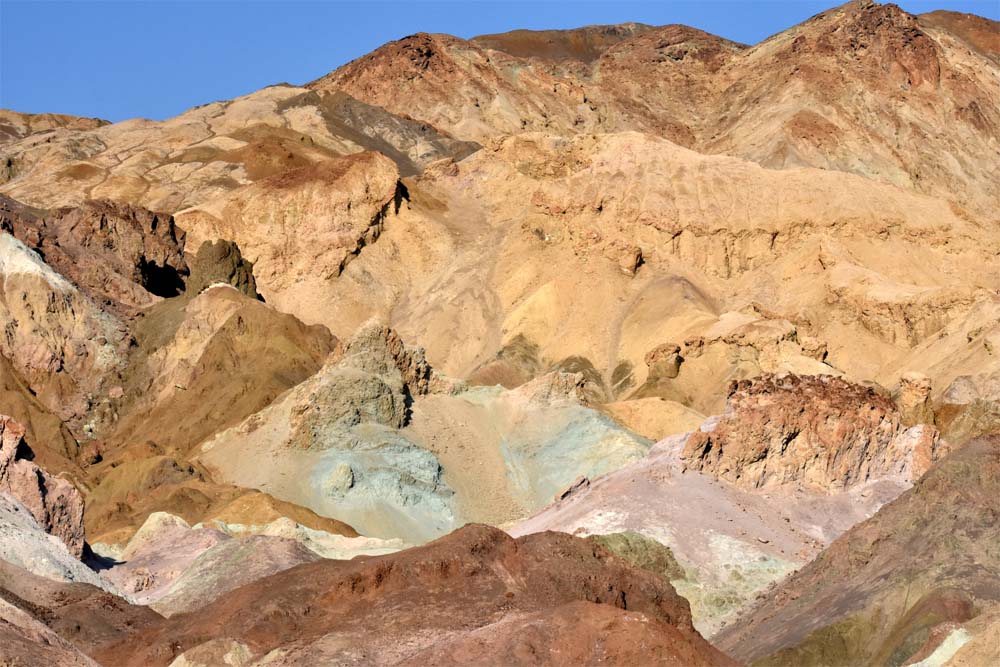
Distance from Furnace Creek: 15 minutes one-way.
5. Devils Golf Course
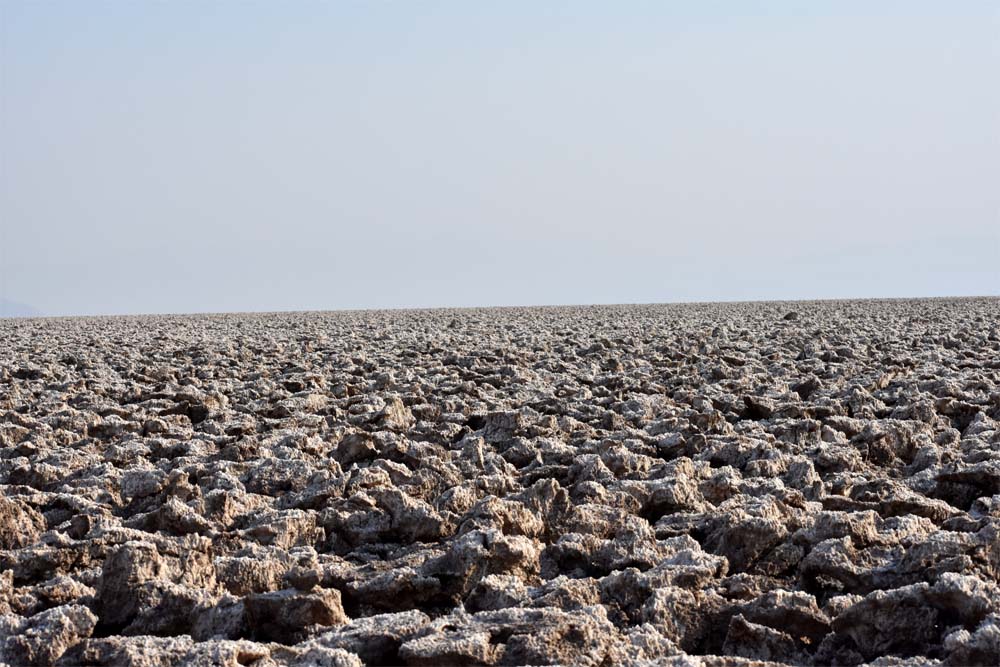
Near Badwater Basin is another out-of-this-world landscape, the Devils Golf Course. It was named because the terrain is so difficult that only the Devil could play golf here.
Years and years ago, a lake called Lake Manly was located here but has since evaporated. Based on scientific research, it’s possible that these salt and gravel beds have a depth of 9,000 feet!
You’ll take an unpaved road to the parking area, then walk a short, easy distance for the best views. The road is usually suitable for vehicles with 2-wheel drive, but check with park rangers in Furnace Creek to be sure.
Distance from Furnace Creek: 30 minutes one-way
6. Dante’s View
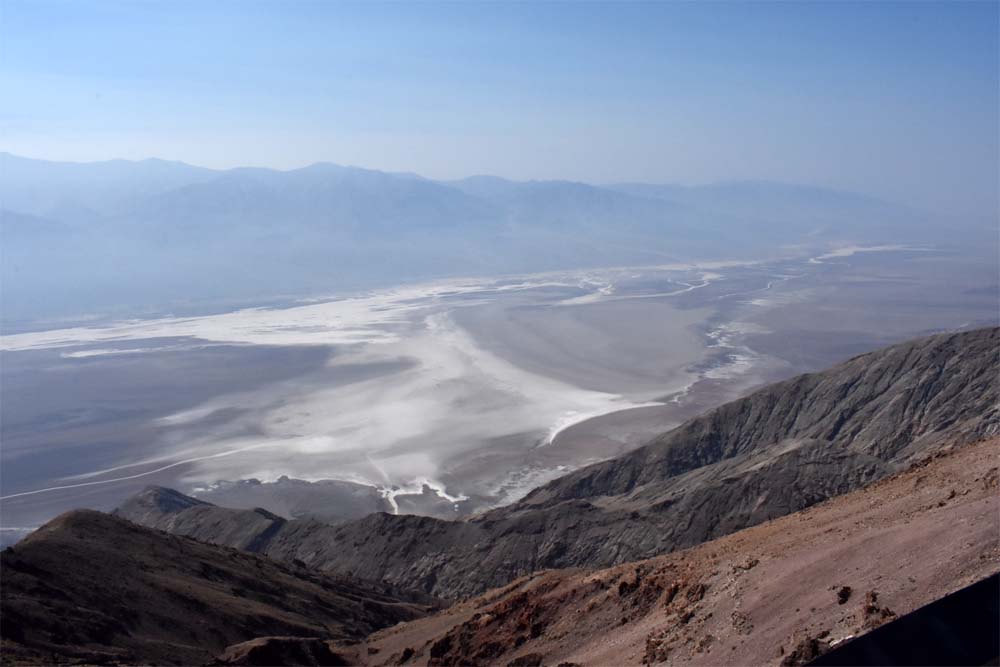
This is one of the most breathtaking scenes in Death Valley that is easily accessible by car. There is an ADA-accessible viewing platform that is only a short distance from the parking area.
Distance from Furnace Creek: 1 hour one way.
7. Mesquite Flats Sand Dunes
If you’ve ever wanted to take some epic, so-cool-they-seem-fake photos on some sand dunes, this is one of the best things to see in Death Valley. You’ll pass the Mesquite Salt Flats on Highway 190 on your way to/from Panamint Springs. While you can see the sand dunes from your vehicle, the best way to experience them is to get out and hike around. You’ll drive down a short, unpaved road to a small parking area to begin your walk. The road is decent and usually okay with a 2WD vehicle. If you have the appropriate vehicle, you can also visit the Panamint Dunes for a less-crowded option.
Distance from Furnace Creek: 30 minutes one-way
8. Keane Wonder Mine
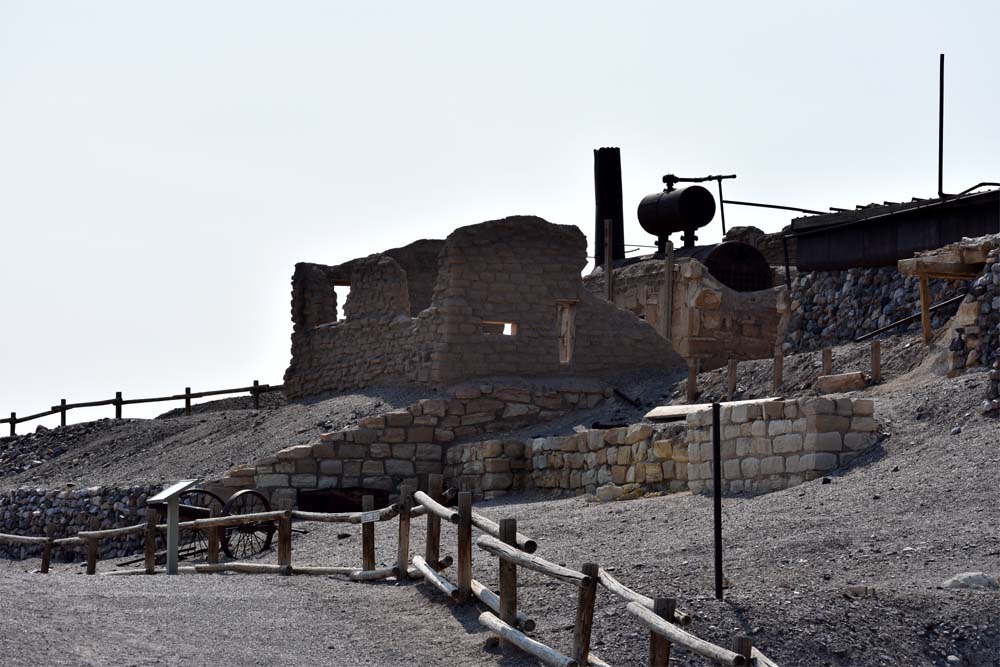
This historic gold mine is over 100-years old, and its trams used to carry up to 70 tons of gold in one day. Please take special notice of things to do in Death Valley might be temporarily or currently closed. Before you visit the park always check current weather conditions, roads can be rough.
Distance from Furnace Creek: 35 minutes one-way.
9. Rainbow Canyon
If you enter Death Valley National Park on the western side near Independence, you’re in for a treat.
On your way from Independence to Furnace Creek, this is one of the most beautiful places to see in Death Valley. Known to some as “Star Wars Canyon” and others as “Jedi Transition”, the true name is Rainbow Canyon.
The U.S. Air Force and Navy both use the canyon for low-flight training, and if you stop by you may be lucky enough to watch. There is no public schedule, so you have to luck out with your timing. If you see a plethora of cameras and tripods set up as you drive by, that’s a good sign a flight may take place. You’ll park near an overlook called Father Crowley Vista Point and take in the view. Even if planes aren’t flying, the scenery is spectacular.
Distance from Furnace Creek: 1.5 hours one-way.
10. Ubehebe Crater
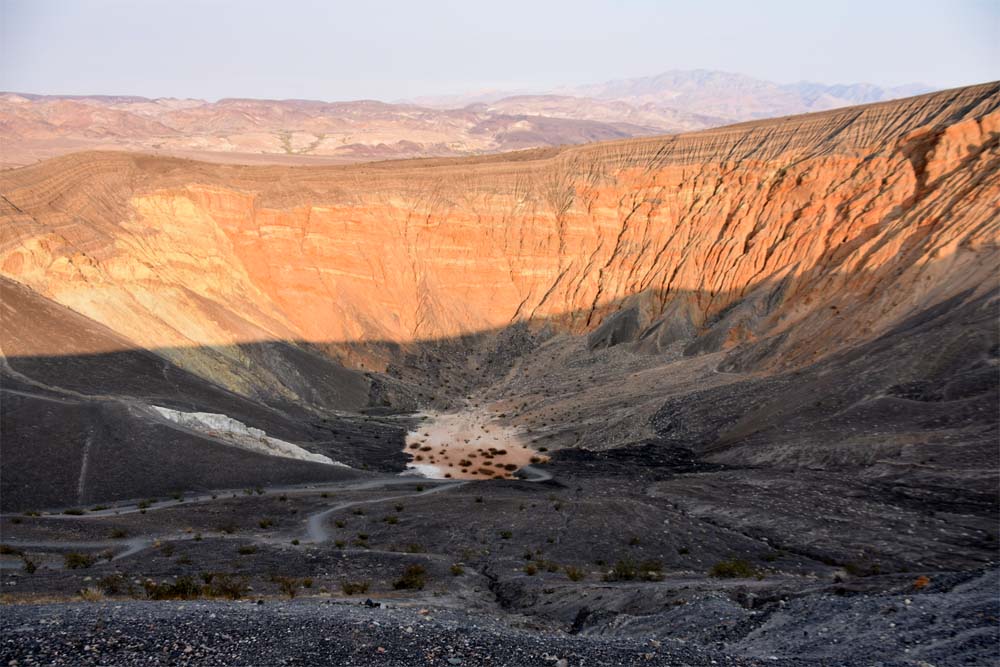
This 600-feet deep crater is what remains after a massive volcanic eruption hundreds of years ago. It’s also over a 1/2-mile wide! The volcanic magma mixed with an underground spring causing the water to become steam resulting in such high pressure that an explosion occurred. This is one of Death Valley’s most stunning geologic features. It’s a bit out of the way and far from other attractions in Death Valley, but worth the trip if you have time.
Distance from Furnace Creek: 1.5 hours one-way
11. Mosaic Canyon
One of my personal favorite things to do in Death Valley is the hike through Mosaic Canyon. While the trail can be difficult, you only need to hike the first 1/2-mile or so to see some of its most beautiful twists and corners. You’ll need to drive on an unpaved road to reach the parking area. This hike can be extremely narrow, and may not be best for people with claustrophobia. There’s also limited shade and no water, so come prepared.
Distance from Furnace Creek: 45 minutes one-way
12. The Racetrack Playa
Of all the attractions in Death Valley National Park, Racetrack Playa may be the most famous.
You’ve undoubtedly heard of the mysterious sailing stones at some point. For years, no one knew what caused these stones to move and leave their “racetracks” behind. In 2017, a documentary was released explaining the cause and how it was discovered (spoiler alert: wind). The area is dry nearly year-round with no vegetation, making the scene even more striking.
The unpaved road to the Racetrack can be very rough. It is essential that you have a high-clearance vehicle to reach the Racetrack, and 4-wheel drive is recommended but not always necessary. Bring extra tires with you as well; many flat tires have been reported on this road. As always, check with Park Rangers for the latest conditions.
Distance from Furnace Creek: 3 hours one-way
13. Scotty’s Castle
Another famous landmark in Death Valley is Scotty’s Castle. While Walter Scott (or “Death Valley Scotty”) claimed to have built the castle with money made from his secret mines, the true artist was Albert Johnson. He built it as a vacation getaway for him and his wife, Bessie.
Sadly, in 2015, damage from horrific flash floods resulted in a closure of Scotty’s Castle. One room in the castle was covered in mud four feet deep!
After restoration work, it was partially re-opened in early 2020 but currently remains closed.
Distance from Furnace Creek: 1 hour one-way
14. Wildrose Charcoal Kilns
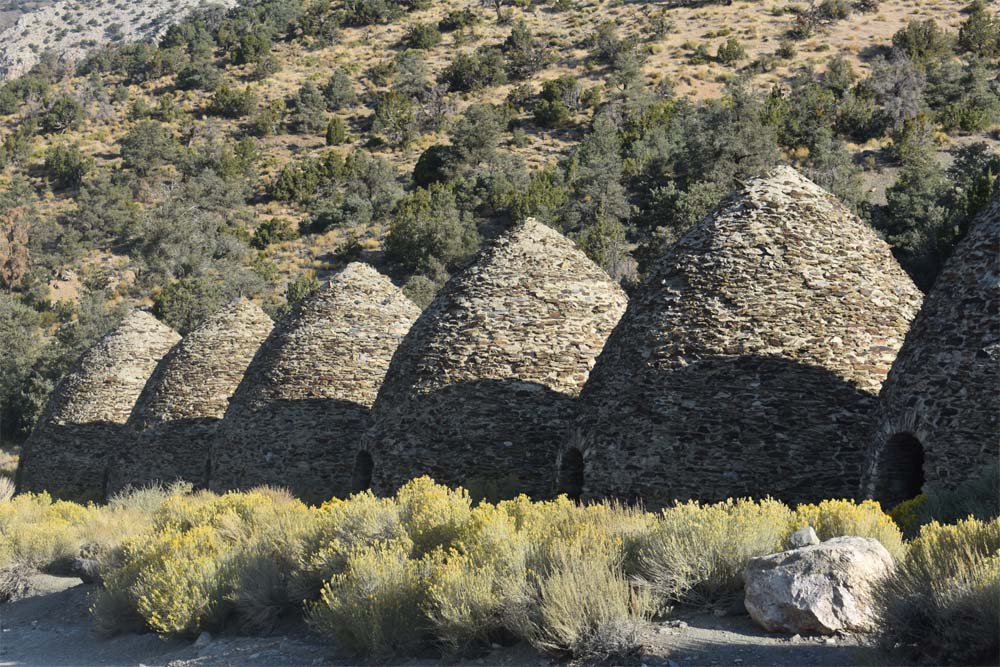
Located in Wildrose Canyon, the kilns were built in 1876 to provide fuel to process silver and lead ore. Today, they’re some of the best-preserved kilns in the Western United States. When you enter, you can still smell the scent of burns.
Driving to the Kilns is one of the best things to do in Death Valley that is off the beaten path, but worth the trip for the scenery and cultural history. It’s also on the way to some great hikes in the park. If you have the time, it’s worth a visit.
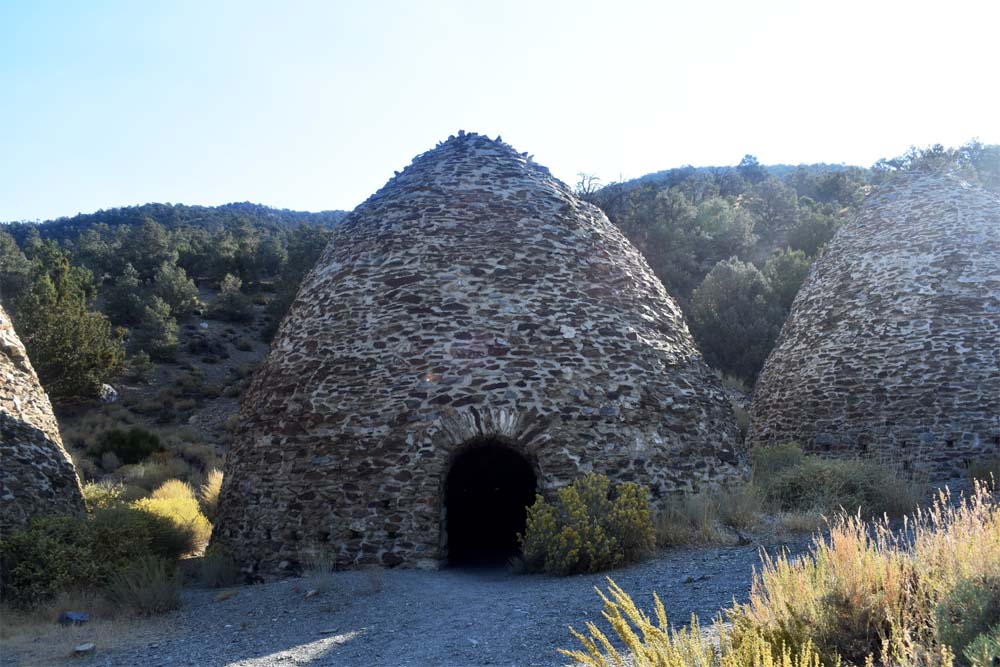
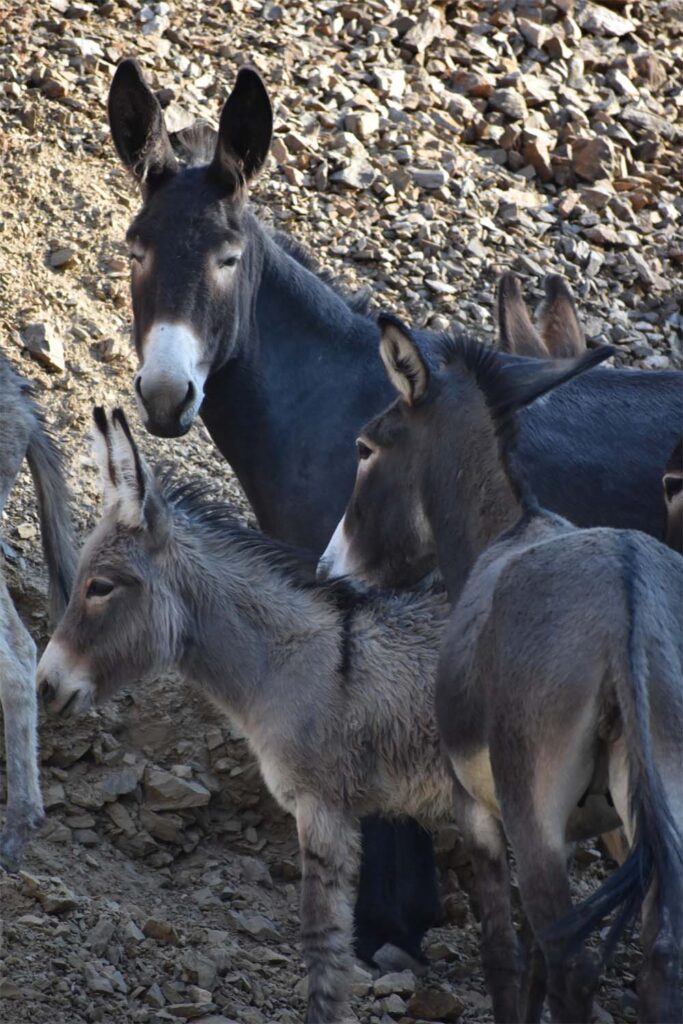
Distance from Furnace Creek: 1.5 hours one-way
These are some of the main attractions but the park has still more to offer!
Where to Stay in Death Valley:
- There are a total of five lodges within the park.
- The Ranch: Of the hotels in Furnace Creek, this is the significantly cheaper option. It’s an older hotel, but the location can’t be beaten.
- The Inn: This 4-star hotel is much nicer than the Ranch, and therefore twice as expensive. Be prepared to shell out the cash for any luxury. Located in Furnace Creek.
- Panamint Springs Motel: Located in Panamint Springs.
- The Inn Casitas: The third property in Furnace Creek is also the newest.
- Stovepipe Wells: There’s a hotel, restaurant, and gift shop located in this small complex just a few minutes north of Furnace Creek in Stovepipe Wells.

